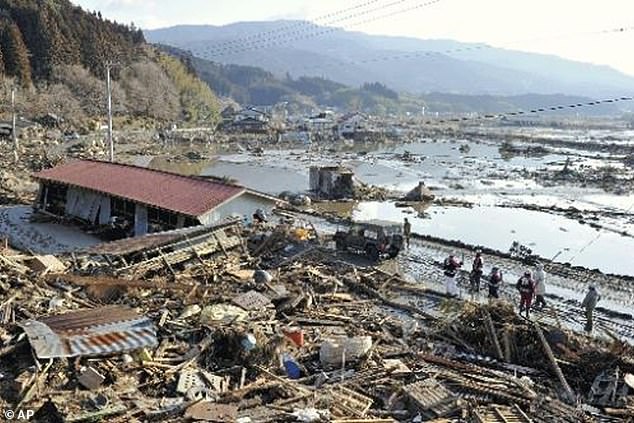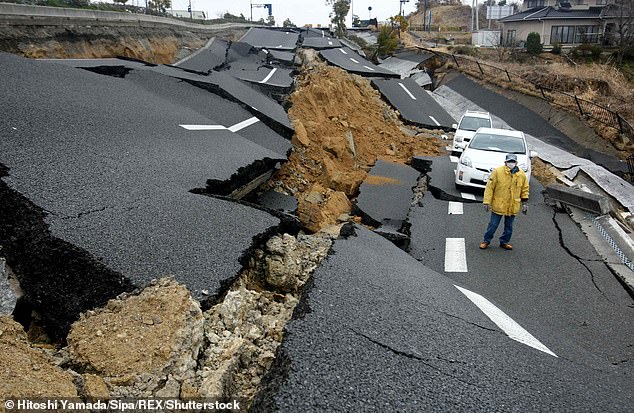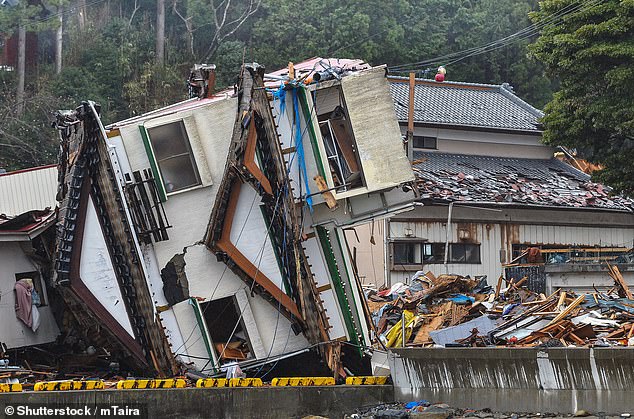How Japanese earthquake has chilling echoes of 2011 tsunami disaster that killed at least 20,000 and caused nuclear meltdown
A devastating earthquake struck central Japan today with a preliminary magnitude of 7.6, prompting mass evacuations – in what will have been a chilling reminder for the country of the 2011 tsunami disaster.
A total of 21 earthquakes of magnitude greater than 4.0 occurred shortly after 4pm local time (7am UK time) today, and videos shared on social media and broadcast on Japanese TV showed how buildings collapsed in Suzu, a city close to the epicenter of the largest earthquake. , causing huge cracks to appear in the roads.
Other clips showed terrified customers being thrown to the ground in department stores and flooding a train station after water pipes burst, as tsunami waves began to ravage coastlines.
For many it will have been a painful reminder of the tragedy on March 11, 2011.
On that day, a catastrophic 9.1 mega-magnitude earthquake rumbled for six minutes just 45 miles east of Japan, sending waves of up to 40 meters (nearly 450 miles per hour) hitting the country.
The waves had enough energy to travel six miles inland, destroying critical infrastructure, homes and offices on the east coast.
People walk along a road among the rubble of destroyed buildings in Minamisanriku city, Miyagi Prefecture, northern Japan, in 2011

Rescue workers stand near completely destroyed houses at a port in Rikuzentakada in Iwate Prefecture, northern Japan, in 2011

On March 11, 2011, a mega-magnitude 9.1 earthquake rumbled for six minutes just 45 miles east of Japan.

It pushed waves up to 40 meters high, almost 700 kilometers per hour, when it hit land
The lives of most of the people killed in the disaster were claimed by the towering waves caused by one of the strongest earthquakes in recorded history.
About 60 people died in Ohisa, one of the districts directly affected by the tsunami, when 6-meter-high tsunami waves washed ashore and swept away everything except a small shrine.
The subsequent meltdown of three reactors at the Fukushima Daiichi nuclear power plant blanketed nearby areas in radiation, rendering some towns uninhabitable for years and forcing tens of thousands of residents to flee.
Seawater flooded the area's power grids and knocked out many of the power plant's backup generators.
This meant there was no energy to cool the reactors, leading to a catastrophic meltdown.
Heat built up and hydrogen gas was produced, which accumulated in the upper part of the tank hall.
When ignited, the roof of the tank hall exploded, spreading radioactive material everywhere.
Everyone within a 12-mile radius was evacuated and the tens of thousands of people who left the country for fear of radiation are still displaced. About two percent of Fukushima remains off-limits.
Most Japanese nuclear reactors are still offline and the government's plans to revive the sector are controversial.
The disaster took a heavy toll on the local and global economy. It was estimated that insurers would have to pay out up to $34.6 billion (£27.2 billion), while Japan's central bank was forced to deploy 15 trillion yen (£84 billion) to stabilize global market conditions.
The World Bank estimated that the earthquake and Fukushima power plant meltdown cost $235 billion. It is believed that the disaster was the costliest in history.
Economists estimate that the aftermath of the 2012 earthquakes caused the Japanese economy to contract by 0.5% in GDP growth.
